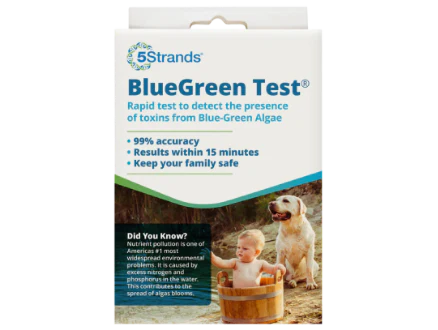Cats can suffer from allergies, intolerances, or adverse food reactions just like people and dogs. If your cat is suffering from unwanted symptoms year round, chances are they are experiencing a food allergy or intolerance. If their unwanted symptoms are seasonal, they could be experiencing environmental allergies or intolerances.
While it is very difficult to control environmental issues, you can help your cat that is experiencing food issues through an elimination diet.
First, let’s look at what the difference is between an allergy and an intolerance.
What are food allergies or intolerances?
A food allergy is an adverse response by the body’s immune system. The immune system is being triggered by a particular substance in your cat’s food.
Most food allergies are caused by the main protein source in a diet. In cats, some of the most common foods to cause a food allergy include beef, chicken, dairy, and fish.
Food allergies are not very common in cats. Only about 1-10% of cats with skin issues or ear issues will have a true food allergy. Cats of any age can develop a food allergy. The average age of seeing the signs is usually between 4-5 years of age.
However, a food intolerance does not involve the immune system. The pet’s body has the inability to process and digest certain foods. Mostly due to the lack of digestive enzymes.
What are the symptoms of food allergies in cats?
Symptoms of food hypersensitivities in cats are very similar to other allergies except that they are not seasonal but year round. Most symptoms of food allergies relate to the skin, however, some cats can also develop gastrointestinal disturbances. Many cats will have more than one symptom.
Common signs include:
- Scratching and Itching of the head, face, and neck
- Hair loss
- Pale fluid-filled lumps on the skin
- Crusty sores and ulcers
- Redness
- Licking
- Chewing
- Secondary bacterial or fungal infection can develop due to trauma
- Vomiting and diarrhea

Diagnosis of Food Allergies
Unfortunately there is no simple test that can give you answers. Your vet may want to first rule out other potential causes. They may perform a thorough physical examination and then may recommend testing. The testing could include skin scraping, surface cytology, hair pluck exam, fungal cultures, blood and urine testing, chemistry panels, thyroid hormone testing, and urinalysis. If nothing significant shows up in this round of testing, your vet may recommend an elimination diet to help aid in diagnosing your cat. An elimination diet is the only way to truly diagnose a food sensitivity in your cat. Popular blood testing and intradermal skin testing are not very reliable.
What is an elimination diet?
An elimination plan is the Gold Standard to determine whether or not you have a food intolerance. It is the only accurate way to diagnose a food allergy or intolerance. It is through this process of elimination that you can identify what your cat is allergic or intolerant to. In order to identify a food allergy, it is important to select a protein source that your cat has never eaten before. The ideal diet is going to be one that does not elicit any type of allergic response.
There are three types of elimination diets:
-
Home cooked diet
Since many cats are very picky, this diet can be a challenge for the pet owner. However, this diet is a must when trying to determine a food intolerance. This diet is made from human whole foods. It still must be a source that your cat has never eaten before. Pets typically love the taste and it is highly digestible. It can be tailored to your pets individualized needs. Having the pet owner construct the daily diet can strengthen the bond between their pet. The drawback is that the diet can be unbalanced nutritionally if not formulated properly. It can be expensive depending on the protein source. For some, it can be inconvenient and time consuming.
Even though the diet may not be nutritionally balanced, as long as your cat is healthy and not pregnant, they should be fine over the course of the elimination period. Remember, you are not constructing their forever diet.
For your cat, you can just choose one meat source. You do not even need to cook it. Most cats will like raw foods.
-
Novel protein diet
Novel protein diets will be either a wet or dry food, single sourced protein or carbohydrate, that your cat has never eaten before. Sometimes this is called an “exotic” food diet. It typically will consist of the protein source such as kangaroo, rabbit, duck, venison. If your cat has ever eaten any of these, then you must find a protein source that they have never had before. The benefit of this type of food is that it will typically be of moderate cost, it should be complete and balanced nutrition as per AAFCO standards, and your cat will probably like it! The downside to this diet is that you will need to know your cat's entire diet history. This could be a potential problem for those cats that have been adopted. In addition, there could be potential for cross contamination and these diets can also contain some common ingredients.
-
Hydrolyzed diets
A hydrolyzed diet is where the protein source is broken down into tiny pieces that the immune system should not react to. This type of diet might work well in determining a food allergy but not a food intolerance since the intolerance does not involve the immune system. This type of diet is highly digestible, completely balanced nutritionally, and can be utilized for long term feeding. The downside to this diet is that it is usually much more costly, some pets do not like the taste, and there is still a possibility of an allergic reaction.
No matter which option you decide to choose, you must remember that you only feed your cat the suggested food. This means no treats, no table food, no flavored medications, etc. Even the smallest table scrap or flavored medication could ruin the test. Every member of your household must be on the same page or this will not work!

How to begin an elimination diet for your cat
Step 1: Begin With a 50/50 Diet
Most vets will recommend you pick two food sources, a protein source and a carbohydrate source. You will feed these foods to your cat for at least 12 weeks. For some it may take longer. Remember not to feed your cat any treats, supplements, dental chews, toothpastes, or flavored medications. The transition to the new food should be done gradually over a 7 day period. Your pets digestive issues should improve within 2-3 weeks. Skin issues should see signs of improving after about 4-8 weeks. If your cat is still having issues after 8 weeks, they may not be experiencing symptoms from food. This step is considered complete when all clinical symptoms have been resolved.
Step 2: Observe and Take Notes
You will want to journal your cats dietary intake and any changes in their symptoms and behaviors during step 1. Please note that if your pet develops any additional negative responses such as breathing difficulty or loss of consciousness, call your vet immediately.
Step 3: Reintroduction Process
Once your cat has completed the elimination period and their symptoms have improved, you will want to begin introducing their previous diet again. This would include the treats and supplements they were consuming before. You will continue to monitor any changes in symptoms. If the symptoms flare up again, you have just confirmed that your cat has a food sensitivity.
Step 4: Confirm
Now that you have confirmed that your cat has a food sensitivity, you will need to restart the initial elimination diet. The symptoms should once again resolve themselves. If the current diet your cat is consuming is appropriate and balanced for them, you can continue feeding them this diet indefinitely.
Step 5: Identify and Craft a Safe and Healthy Diet for Your Pet
The final step is to identify the specific ingredient that is causing a response. You would continue to feed your cat the current elimination diet but now will start to add one ingredient at a time for 2 week intervals. Typically you would begin with a protein source previously fed that can be added as a treat or meal topper. If symptoms are noted, then the ingredient should be avoided. These individual ingredients should be based on their previous diet history. Each ingredient should be introduced separately.
Knowing which ingredients are problematic for your cat will then allow you to find a commercially prepared pet food with limited ingredients or to be able to construct an accurate, appropriate home cooked meal.
What if the elimination trial fails?
If you do not see any change in your cats symptoms after the expected time period, there could be several factors that may have contributed to the failure:
The first could be poor owner compliance. The elimination plan is a strict diet. You or any other member of your household should not deviate from the plan. Even one slip up could derail the diet and you would need to start over. Everyone in the household MUST be committed.
The second could be cross contamination during food production. When you are trying to determine what to feed your cat during the elimination period, you may decide on a particular food to feed that is an over the counter limited ingredient diet. However, these foods are prepared in commercial kitchens where other food ingredients are readily available and cross contamination can occur. Your cat may have been exposed to a food item you think they have never eaten but have actually been exposed to through cross contamination.
The third issue could be the improper choice of a novel protein source. This can be very common especially when the cat has been adopted and you do not know their complete eating history.
The fourth issue is that the cat has a non-food related allergy. Environmental allergies need to be considered along with flea allergy dermatitis.
Long term management
There is no cure for food allergies, the goal is to identify the protein or carbohydrate and avoid it. It may not always be possible to pinpoint the exact trigger and the cat will remain on the hypoallergenic diet. In some cases, the cat will develop allergies to the new food source, at which point it will be necessary to try a different hypoallergenic diet.
What if there was an easy way to give yourself a guideline to follow?
A guide that takes all the guesswork out of this process.
5Strands Affordable Testing has created a simple at home hair analysis test using bioresonance technology that will determine all of the food items that your dog is having an intolerance to. In one simple test, you will receive a report that will indicate all of the items your dog showed a response to and all of the items they did not respond to. You will be able to conduct an elimination plan without any guesswork. You will then be able to start reintroducing foods right after the elimination period. No need to spend weeks trying to figure out what you can and can not feed your furry friend! 5Strands testing results will save you so much time and energy.
The 5Strands Pet Food test will test your pet against over 255 food ingredients found in most commercially prepared foods. It will include proteins, grains, fruits, vegetables, seafood, additives, preservatives, food colorings and flavorings. If the elimination guideline is overwhelming for you, they also have a Certified Pet Nutritionist on staff. Tazz Latifi offers consultations at a nominal fee to customers. She is able to assist pet owners with specific recommendations on how to manipulate the pet’s diet in a safe and healthy way.


























